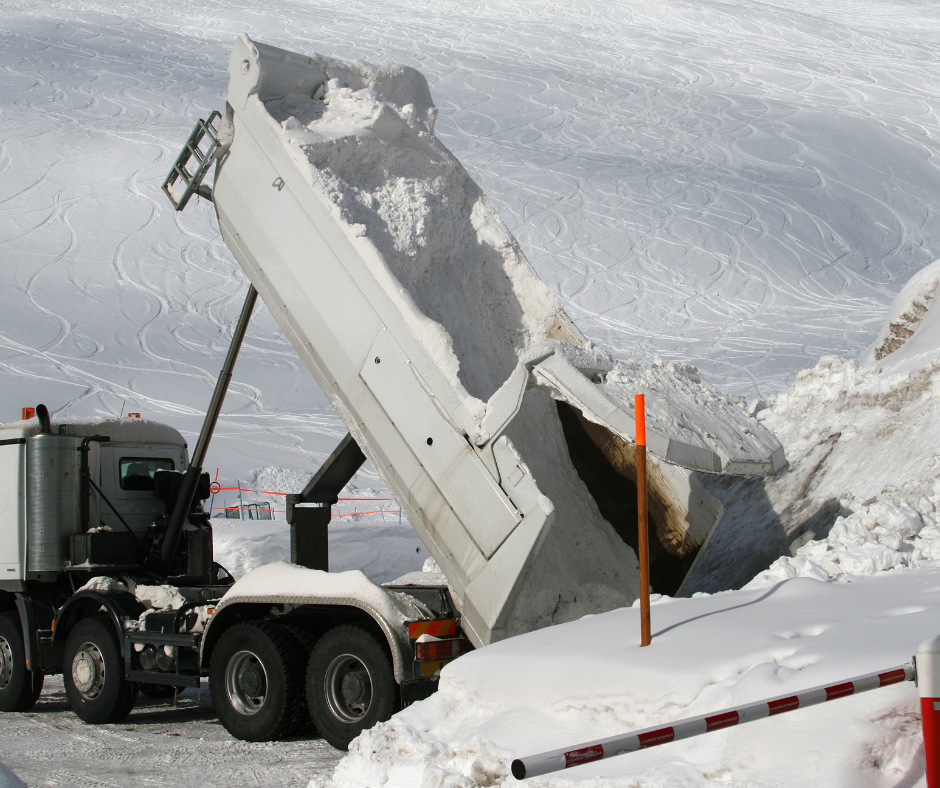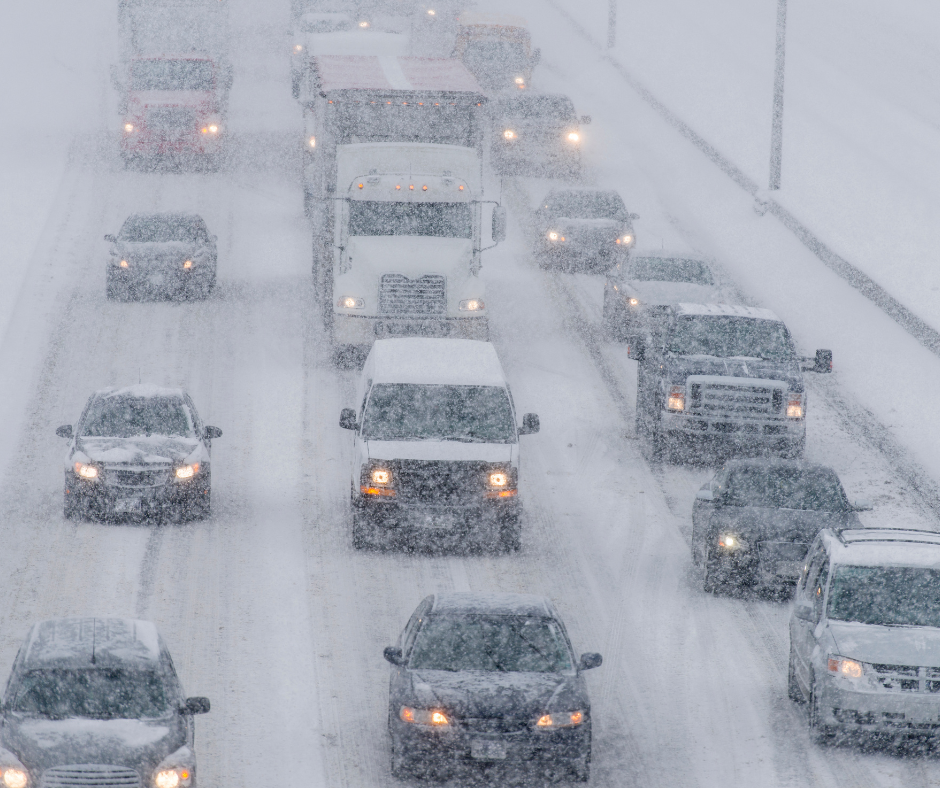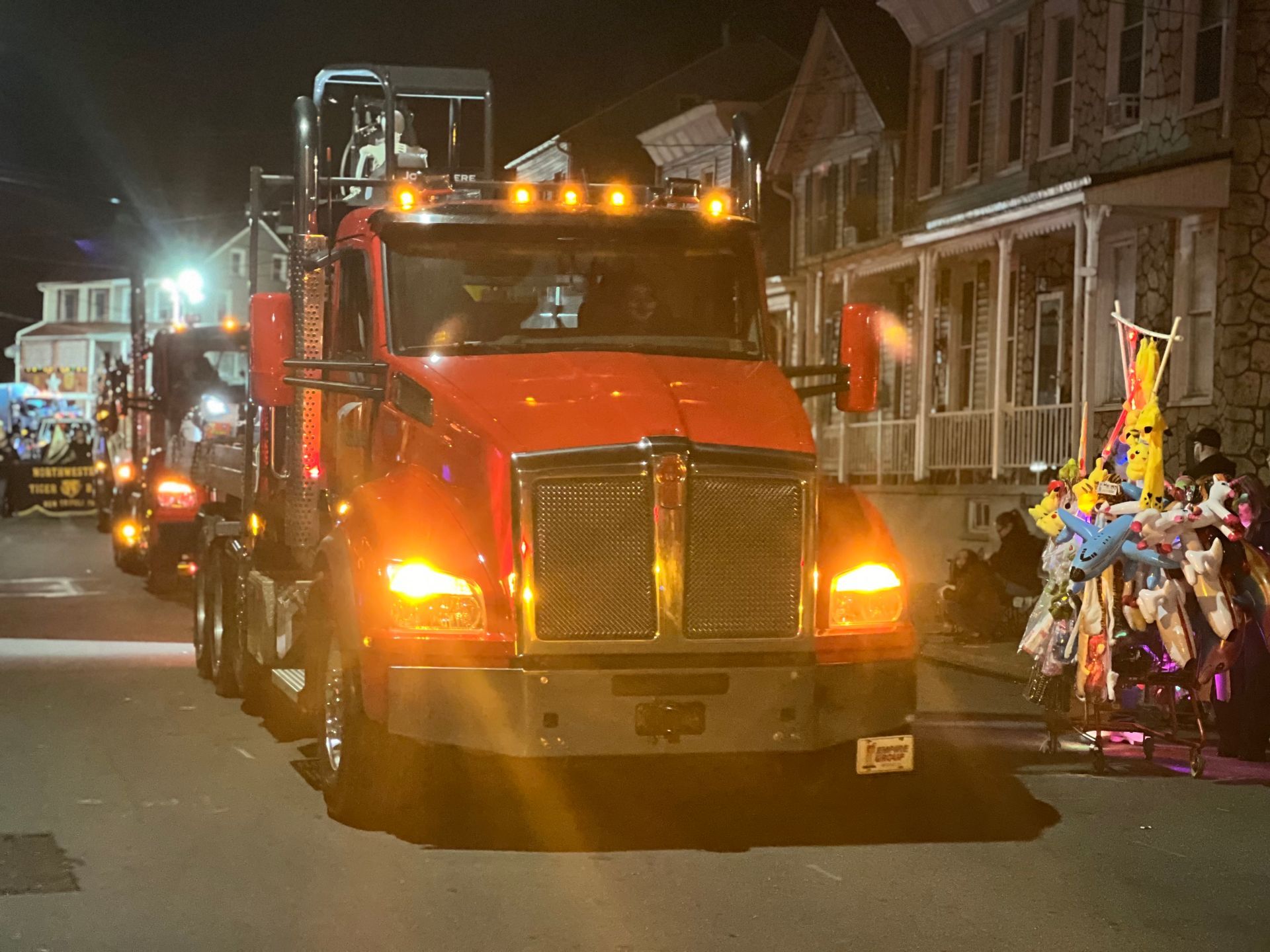Six Winter Driving Hazards for Truck Drivers
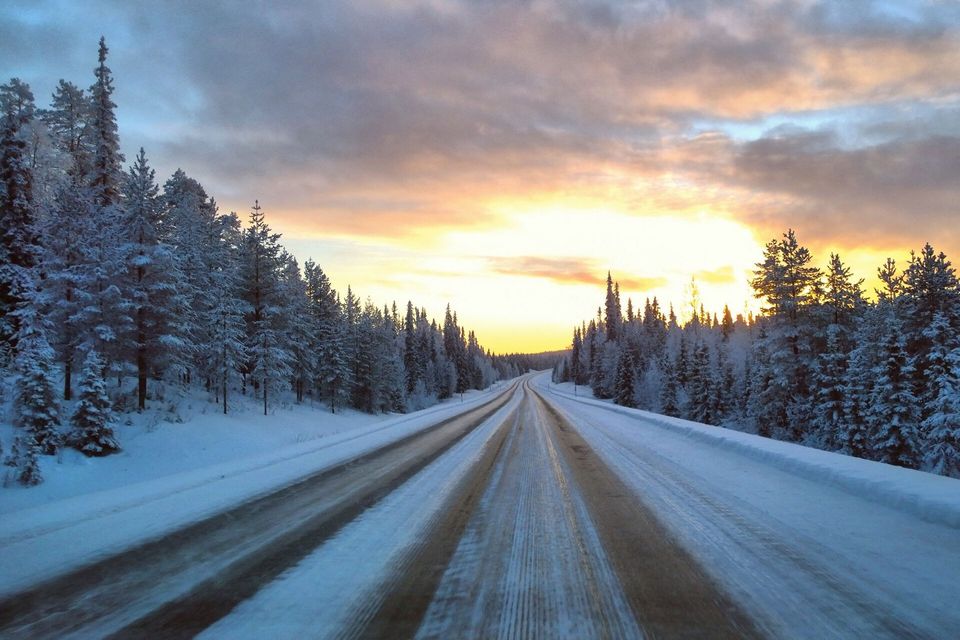
Winter is here and so are the driving hazards that come with it. They can make your journey even more difficult, aside from ensuring the load arrives safety and on time. If you live in an area like we do, winter weather can change quickly with dropping temperatures and snow squalls. Or we can get a large amount of snowfall one year and none the next. If fact, the previous two winters did not produce any snow. However, this winter is making up for it. It is even more important to be proactive in keeping your truck and yourself safe in rough winter conditions. Let’s take a look at the six types of winter driving hazards you’ll encounter.
1. Wind – During a blizzard, winds can gust up to 35 miles per hour. They blow snow around to cause whiteouts and snowdrifts. High winds can also stem from Nor’Easters.
2. Black Ice – This form of ice takes drivers by surprise because it coats surfaces and is transparent, allowing the road beneath it to be visible. When black ice has been reported, it is imperative to take it slow and allow extra space between your truck and the vehicle in front of you.
3. Heavy Rain – It is not unheard of to have heavy rainstorms in winter. It can reduce visibility as well as cause hydroplaning. It is important to note that semi-trucks can hydroplane when tire treads cannot displace water on the road surface.
4. Fog – Believe it or not, fog can occur in winter when warmer air passes over colder ground. With subfreezing temperatures, fog can freeze onto surfaces making them slick.
5. Bridges – They freeze before roads because of the air around them. Cold air flows above and below bridges, allowing them to lose their heat. Thus, bridges get colder and freeze over faster than roads.
6. Snow Piles – When there is a large snowfall, roads can become narrower due to the snow piles that line one of both sides of them. These snow piles are also on street corners and medians, which may reduce visibility for cars and cause accidents.
Whether there is an inch or two feet of snow on the ground, you should always inspect your truck before starting your haul to reduce the risk of breaking down or causing an accident. Areas to inspect include tires, battery, wiper blades, lights, exhaust pipe and defrosters. It’s also advised to get up-to-the-minute weather reports to help plan alternate routes.
At DVC, safety is our priority. We make sure our fleet is ready to handle winter weather with frequent inspections. We also plan alternate routes to help keep our drivers safe before and during transit. Contact us today to learn more about our fleet and transportation services.
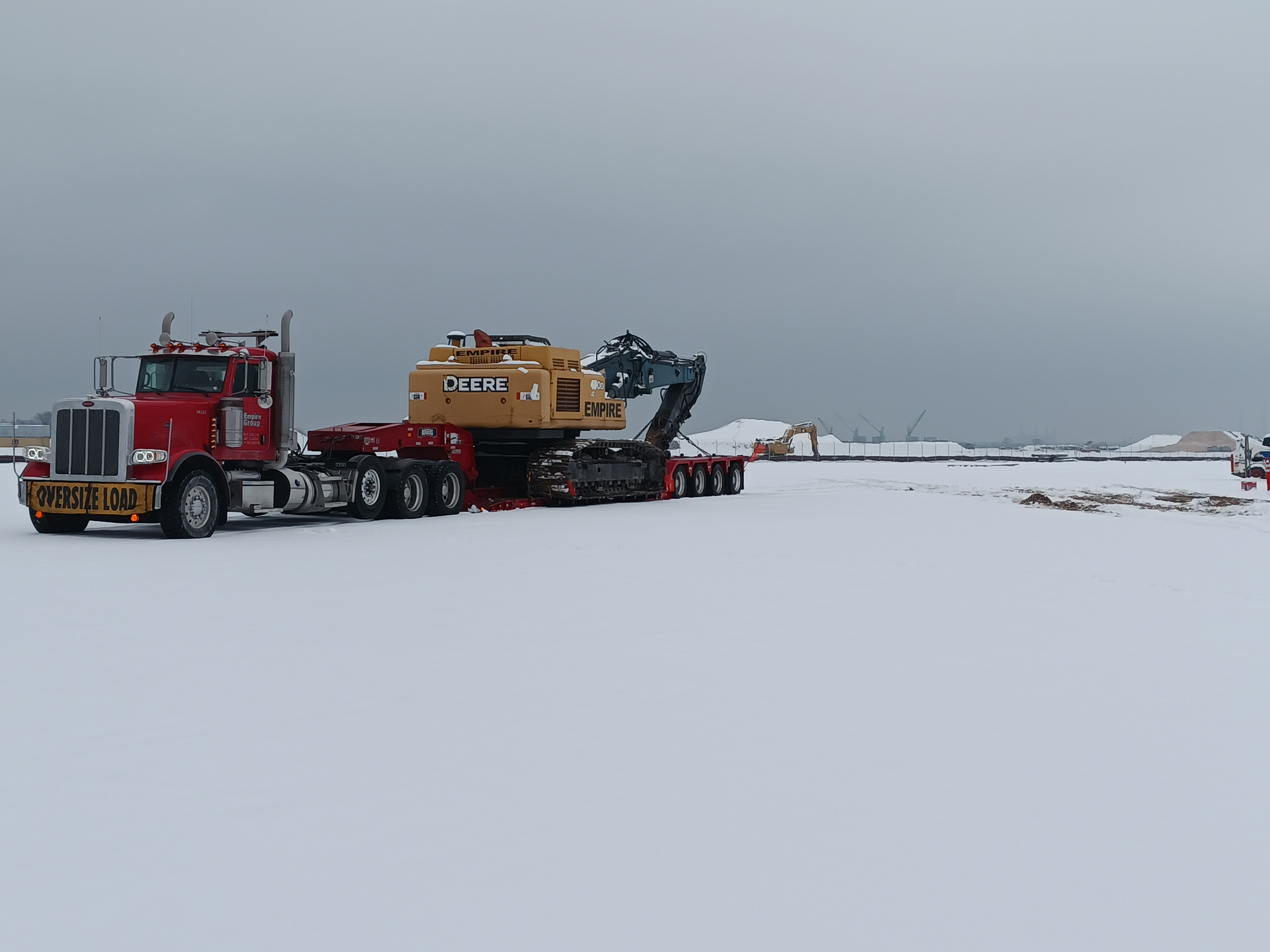

How DVC's Trailers Are Perfect for Transporting Mulch, Stone, Sand and Soil for Landscaping Projects


